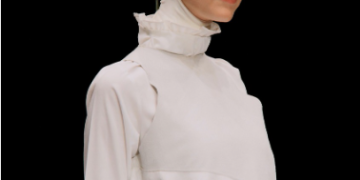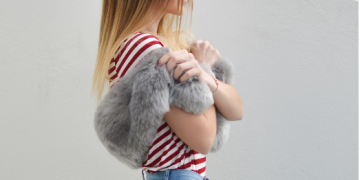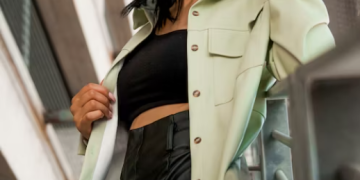Introduction to Eco-Friendly Fabrics
Eco-friendly fabrics are at the forefront of a revolution in the fashion industry, offering a sustainable alternative to conventional textiles. As the detrimental environmental and social impacts of fast fashion become increasingly apparent, consumers and brands alike are turning to eco-friendly materials as a solution to promote ethical practices and reduce their carbon footprint. From organic cotton to innovative bio-based fibers, these fabrics are shaping the future of ethical fashion.
The Rise of Sustainable Fashion
In recent years, there has been a significant shift towards sustainable fashion, driven by growing consumer awareness and demand for ethically produced clothing. Concerns about the environmental degradation caused by traditional textile production methods, as well as the exploitation of garment workers in developing countries, have prompted a reevaluation of industry practices. As a result, fashion brands are increasingly incorporating eco-friendly fabrics into their collections and adopting transparent and ethical supply chains.
Benefits of Eco-Friendly Fabrics
Eco-friendly fabrics offer a host of benefits, both for the environment and society. By using natural and renewable resources, such as organic cotton and hemp, these materials help reduce the carbon footprint of the fashion industry and minimize reliance on finite resources. Additionally, eco-friendly fabrics support fair labor practices and local economies, providing opportunities for farmers and artisans in developing countries.
Types of Eco-Friendly Fabrics
There is a wide range of eco-friendly fabrics available, each with its own unique properties and advantages. Organic cotton, for example, is grown without the use of harmful pesticides and chemicals, making it better for both the environment and the health of farmers. Hemp is another sustainable option, known for its durability and versatility, as well as its minimal impact on the soil and water. Bamboo is a fast-growing and renewable resource that requires little water and no pesticides to cultivate, making it an excellent choice for eco-conscious consumers. Tencel, also known as Lyocell, is produced using a closed-loop process that recycles solvents and minimizes waste, resulting in a fabric that is both environmentally friendly and luxurious to wear.
Innovations in Eco-Friendly Textiles
In addition to traditional eco-friendly fabrics, there are also innovative materials being developed that push the boundaries of sustainability. Recycled fabrics, made from post-consumer and post-industrial waste, are gaining popularity as a way to reduce the environmental impact of textile production and divert materials from landfills. Bio-based materials, derived from renewable resources such as algae and mushrooms, offer a promising alternative to conventional textiles, with the potential to revolutionize the industry. High-tech solutions, such as lab-grown fabrics and 3D printing, are also being explored as sustainable alternatives to traditional manufacturing methods.
Challenges and Limitations
Despite the many benefits of eco-friendly fabrics, there are also challenges and limitations to consider. Cost considerations can be a barrier for some consumers, as eco-friendly fabrics are often more expensive to produce than conventional textiles. Additionally, availability can be an issue, with limited options and accessibility in certain regions. Performance and durability are also important factors to consider, as eco-friendly fabrics must meet the same standards for quality and longevity as their conventional counterparts.
The Role of Consumers in Driving Change
Consumers play a crucial role in driving the adoption of eco-friendly fabrics and promoting sustainability in the fashion industry. By making informed choices about the clothing they purchase and supporting brands that prioritize sustainability, consumers can send a powerful message to the industry about the importance of ethical and eco-friendly practices. Advocacy and activism are also important tools for effecting change, as consumers can use their collective voice to demand transparency and accountability from brands and policymakers.
Fashion Brands Embracing Eco-Friendly Practices
Many fashion brands are leading the way in embracing eco-friendly practices and incorporating sustainable materials into their collections. From small independent labels to global fashion houses, companies across the industry are committing to transparent and ethical sourcing practices and investing in innovative solutions to reduce their environmental impact. Corporate responsibility is becoming increasingly important, as brands recognize the need to align their values with those of their consumers and demonstrate their commitment to sustainability.
Tips for Choosing Eco-Friendly Fabrics
When shopping for eco-friendly clothing, there are several tips to keep in mind to ensure you are making the most sustainable choices. Research and verify brands’ sustainability claims, looking for certifications such as Fair Trade and Global Organic Textile Standard (GOTS) that indicate a commitment to ethical and eco-friendly practices. Prioritize quality over quantity, investing in well-made garments that will last for years to come. Support local and ethical brands whenever possible, and consider exploring second-hand and vintage options to reduce waste and minimize your environmental footprint.
Educational Outreach and Awareness
Raising awareness about the importance of eco-friendly fabrics and sustainable fashion is key to driving widespread adoption of these practices. Through educational outreach and community engagement initiatives, consumers can learn about the environmental and social impacts of their clothing choices and make more informed decisions. Sustainable fashion initiatives, such as clothing swaps, repair workshops, and zero-waste challenges, provide opportunities for people to get involved and take action towards a more sustainable future.
Collaborative Efforts Towards Sustainability
Collaboration is essential for achieving meaningful progress towards sustainability in the fashion industry. By working together across sectors and disciplines, stakeholders can share knowledge, resources, and best practices to drive innovation and overcome challenges. Industry partnerships, such as collaborations between fashion brands and textile manufacturers, are instrumental in developing new eco-friendly materials and production methods. Cross-sector alliances, involving government agencies, non-profit organizations, and academic institutions, are also important for advocating for policy change and supporting initiatives that promote sustainability.
The Environmental Impact of Conventional Textiles
While eco-friendly fabrics offer many advantages over conventional textiles, it’s important to recognize the environmental impact of traditional fashion production methods. Conventional textiles are often produced using harmful chemicals and pesticides, leading to pollution of air, water, and soil. Mass production and consumption also contribute to waste and resource depletion, further exacerbating environmental degradation. By contrast, eco-friendly fabrics prioritize sustainability and minimize harm to the planet and its inhabitants.
Government Regulations and Policy Initiatives
Government regulations and policy initiatives play a crucial role in shaping the future of sustainable fashion. Legislation addressing environmental and social concerns, such as bans on toxic chemicals and regulations on waste management, can help create a more favorable environment for eco-friendly practices. Incentives and support programs, such as tax incentives for sustainable businesses and funding for research and development, can also encourage innovation and investment in sustainable fashion solutions.
Measuring Progress and Accountability
Measuring progress and accountability are essential for evaluating the effectiveness of sustainability initiatives within the fashion industry. Metrics such as carbon footprint, water usage, and worker well-being provide valuable insights into the environmental and social impact of clothing production. Transparency and reporting are also crucial for holding brands accountable for their commitments to sustainability and ensuring that they are meeting their goals and obligations. By tracking progress and sharing results openly, brands can build trust and credibility with consumers and stakeholders and demonstrate their commitment to positive change.
Conclusion
In conclusion, eco-friendly fabrics are the future of ethical fashion, offering a sustainable alternative to conventional textiles that prioritizes environmental responsibility and social equity. By choosing eco-friendly clothing and supporting brands that prioritize sustainability, consumers can play a crucial role in driving positive change within the fashion industry. Through collaboration, advocacy, and education, we can work together to build a more ethical, equitable, and sustainable future for fashion.

FAQs:
- What are eco-friendly fabrics?
- Eco-friendly fabrics are textiles made from natural, renewable, and sustainable materials that minimize environmental impact and promote ethical production practices. Examples include organic cotton, hemp, bamboo, and Tencel (Lyocell).
- Why are eco-friendly fabrics important?
- Eco-friendly fabrics are important because they help reduce the environmental and social impact of the fashion industry. By using natural and renewable resources and prioritizing ethical production practices, eco-friendly fabrics promote sustainability and support fair labor standards.
- How can consumers support the adoption of eco-friendly fabrics?
- Consumers can support the adoption of eco-friendly fabrics by making informed choices about the clothing they purchase, prioritizing brands that use sustainable materials and ethical production practices. By voting with their wallets and advocating for change, consumers can drive demand for eco-friendly fashion and encourage industry-wide adoption of sustainable practices.
- What are some certifications to look for when choosing eco-friendly clothing?
- Some certifications to look for when choosing eco-friendly clothing include Fair Trade, Global Organic Textile Standard (GOTS), and OEKO-TEX Standard 100. These certifications indicate that the clothing has been produced using environmentally friendly and socially responsible practices and meets strict standards for quality and safety.
- What are some challenges associated with eco-friendly fabrics?
- Some challenges associated with eco-friendly fabrics include cost considerations, availability issues, and concerns about performance and durability. Eco-friendly fabrics are often more expensive to produce than conventional textiles and may be less widely available in certain regions. Additionally, some consumers may be skeptical about the quality and longevity of eco-friendly fabrics compared to their conventional counterparts.













